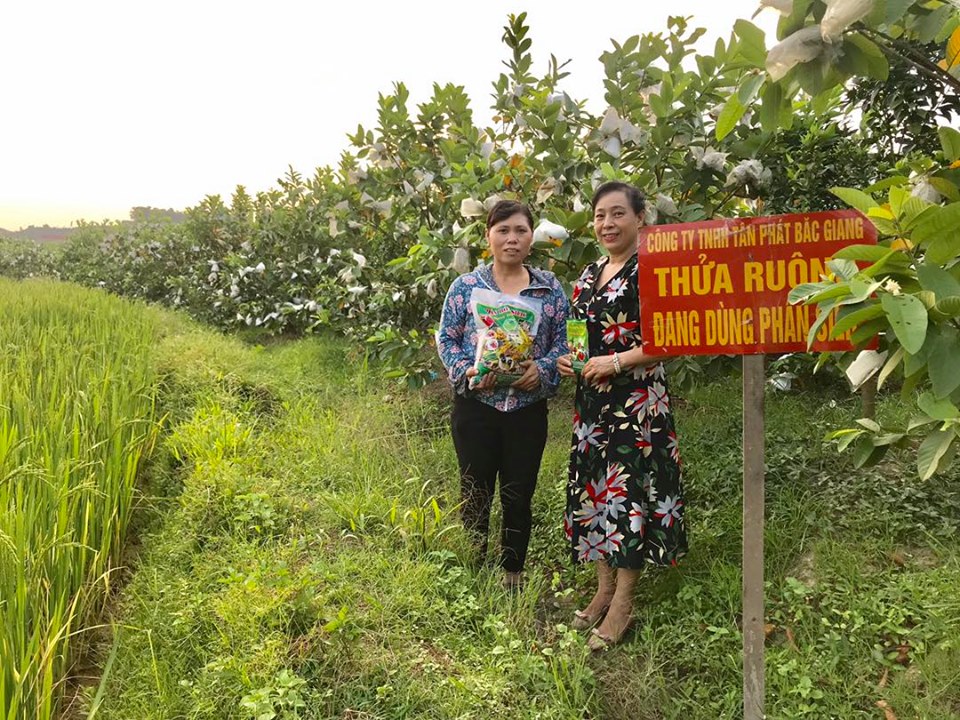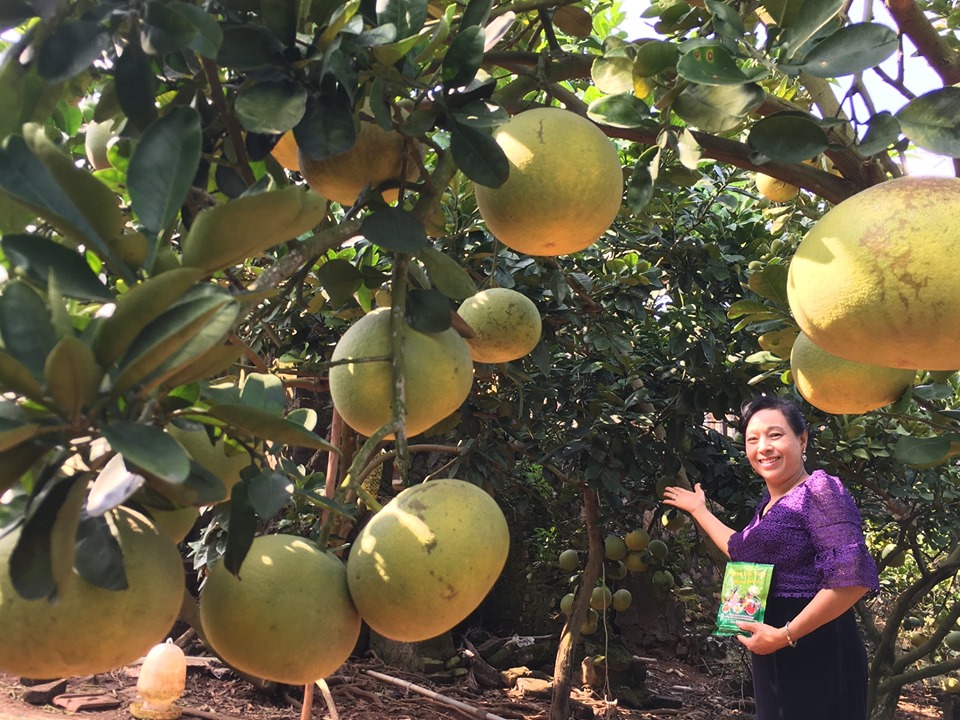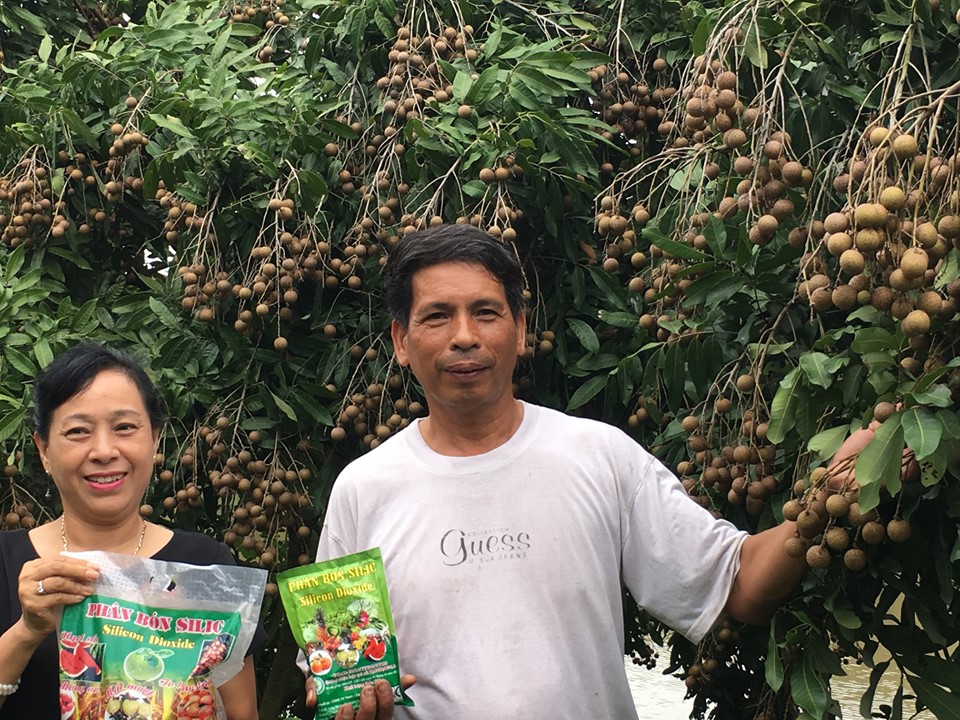Due to the imbalance of fertilizer, pests and diseases increase, soil degradation and inefficient production.
Plants that want to grow well in addition to protein, phosphorus, potassium also have to provide enough medium and microelements totaling 16 essential elements. Micronutrients, though the plants need very little, are considered as limiting productivity.
some pictures of silicon fertilizer used in plants:

Figure 1: Silicon fertilizer in Tree Jackfruit.

Figure 2: Silicon fertilizer in Guava tree.

Figure 3: Silicon fertilizer in Grapefruit tree

Figure 4: Silicon fertilizer in Grapefruit tree..

Figure 5: Silicon fertilizer in Apple tree.

Figure 6: Silicon fertilizer in Litchi, rambutan ...
To aim at advanced, modern and high-tech agricultural production to make quality, safe, high-value, environmentally friendly products, the role of middle and micro substances must be more and more be especially respected.
The medium and micronutrients help plants increase productivity and quality, increase resistance to unfavorable external conditions, pests, reduce environmental pollution, and improve soil.
The first, important trace element is silicon (SiO2), silicon acid in aqueous solution will interact with pectin and polyphenols in the cell, and then be located in the cell wall to help hard cells more cable.
The roots after absorption of silicon will be transported and accumulated in the vein, helping to prevent falls. Silicones also accumulate along the root axis and accumulate in many inner walls of the epidermis. It acts as an effective barrier mechanism against the infestation of the middle axis of the plant due to pathogens and parasitic plants in leaf shoots.
The distribution of silicon depends on the evaporation of plants and the accumulation after evaporation into leaf epidermal cells is permeated with a thin film of silicon and becomes an effective barrier against dehydration due to evaporation. water through cutin and fungal infection.
Silicon enhances the resistance of plants to insects and harmful organisms such as trash, pests, sucking bugs, fungi and bacteria.
Calcium (CaO) forms calcium pectate, an important component in cell walls, to keep cells stable. Calcium also maintains anion and cation balance in the cell, so it is considered as an anti-toxic factor for plants, besides calcium also improves acidic soil, gradually increasing the soil pH.
Magnesium (MgO) reduces acidity, smells alum, increases soil fertility, helps plants synthesize proteins and metabolize nutrients. Micronutrients such as Fe, Zn, Cu, Mn, Mo, Bo ... although the plant needs a small amount but is essential for growth, development and lack of will limit a lot of productivity and product quality.
The role of secondary and microelements for plants: Silicium helps to harden rice, corn and sugarcane; increase resistance, limit tire drop ... contribute to reducing toxic Mn, Mg; increasing the quality of agricultural products, creating chlorophyll and glucose; increase starch in seed tubers; increase sugar ratio for sugarcane and fruit; rate of leaf hydroxide in leaves, ratio of essential oils for aromatherapy and onion garlic, make thick mulberry leaves, silkworms eat less thick cocoon, long and durable silk.
Particularly for rice, medium and microelements in addition to the above benefits, silicon also limits the harmful effects of other adverse environmental factors such as salinity, drought and metal poisoning. Lack of silicon, the percentage of suspended particles increases, reduces the yield and quality of rice, the husk and the thin silk shell have a weak texture, which is easy to be penetrated by yeast to reduce quality and difficult to preserve.
The three essential ingredients for high quality rice are phosphorus (P2O5), Silicium (SiO2) and Magnesium (MgO). MgO with CaO forms and preserves the flavor of rice, contributing to beautiful shiny rice, creating fat. Sufficient intake of CaO and Mg increased pH of rice, so it is easy to preserve and limit moisture absorption.
For fruit trees, medium and microelements also make beautiful fruit designs, preserved for a long time and add delicious flavors to help maintain the typical flavor of the varieties. For example, citrus plants are pomelos, oranges and mandarins, which play the role of medium and microelements: young leaf Zn deficiency and leaf veins, greening disease-like symptoms are common in acidic or alkaline soil.
Mg deficiency of old leaves with yellow streaks on both sides of the main veins starting from the leaf tips, severe leaf loss will result. Mn deficiency is similar to the symptoms of Zn deficiency other than pale blue stains rather than yellowish green. Fe deficiency is similar to the symptoms of Zn deficiency, Mn deficiency but only in young leaves.
Micronutrient deficiency is an imbalance in nutrition, easy to cause yellow leaf mosaic disease, loss of flowers, young fruit drop. In addition to micronutrients such as Mg, Zn also increases resistance to plants. Micronutrients also help to reduce the number of seeds, increase flavor, and beautify the fruit code.
With industrial plants: coffee: The medium quality S, Mg, Ca is necessary especially in the dry season, helping flowers bloom well, high fructification rate, good quality yield; S deficiency of thin, brittle young leaves, turning yellow. Lack of Mg, Ca tree weak, fragile branches, fruit drop. Lack of micro-quantity of barren trees, young leaves of pale color or length of pollen grains are less developed, fruit fruiting rate is low.
Micronutrients also help coffee increase resistance to pests and hot weather conditions in the dry season.
According to Dr. Truong Hong, Q. Director of the Western Highlands Agriculture and Forestry Science Institute: "Study some indicators related to the quality of soil for coffee cultivation after 20 years of using Van Dien phosphate (the fertilizer contains fully medium and microelements have the effect of maintaining soil quality through exchanging indicators such as, calcium, magnesium, absorbing capacity effectively while applying mixed phosphate, the soil quality criteria tend to decrease. gradually.
Because Van Dien phosphorus has a high level of CaO and MgO, it is applied to soil for many years to limit soil acidification, improving the condition of exchanging Ca2 + and Mg2 + in soil to increase soil quality.
For vegetable plants, the effect color of medium, microelements as well as plants in general: helps to increase the quality of productivity, increase the resistance, keep and increase the characteristic flavor of each vegetable
Source: nongnghiep.vn